When a flash flood warning is issued for your area, or the moment you first realize that a flash flood is imminent, act quickly to save yourself. You may only have seconds.
- Get out of areas subject to flooding. This includes dips, low spots, canyons, washes, etc.
- Avoid already flooded and high velocity flow areas. Do not attempt to cross a flowing stream on foot where the water is above your knees.
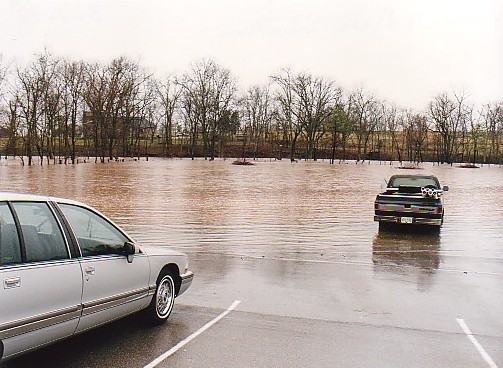
- If driving, know the depth of water in a dip before crossing. The road bed may not be intact under the water.
- If the vehicle stalls, abandon it immediately; seek higher ground. Rapidly rising water may engulf the vehicle and its occupants and sweep them away.
- Be especially cautious at night when it is harder to recognize flood dangers.
- Do not camp or park your vehicle along streams and washes, particularly during threatening conditions.
|
When a tornado threatens, immediate action can save your life.
- Avoid windows, doors and outside walls; protect your head.
- In homes and small buildings, go to the basement or to an interior part of the lowest level; such as a closet, a bathroom, or an interior hallway. Get underneath something sturdy.
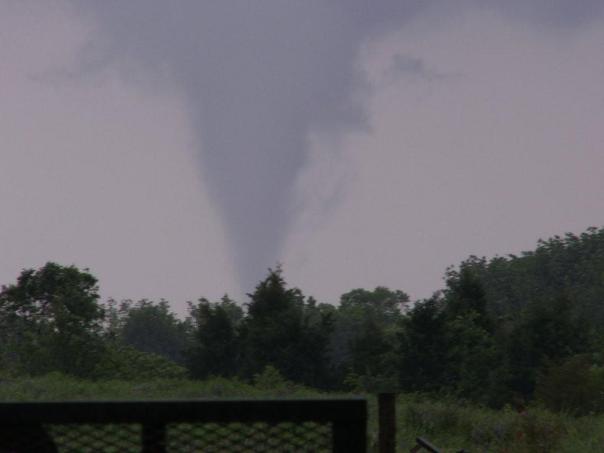
- In schools, nursing homes, hospitals, factories, and shopping centers, go to pre-designated shelter areas. Interior hallways on the lowest floor are usually the safest.
- In high-rise buildings, go to interior small rooms or hallways.
- Leave mobile homes or vehicles, and go to a substantial shelter. If there is no shelter nearby, lie flat in the nearest ditch, ravine, or culvert with your hands shielding your head. Be alert for rapidly rising waters in the ditch.
|
| Thunderstorm Safety Rules |
|
|
|
|
When a thunderstorm threatens. . .
- Get inside a home, large building, or an all-metal (not convertible) automobile.
- Do not use the telephone except for emergencies.
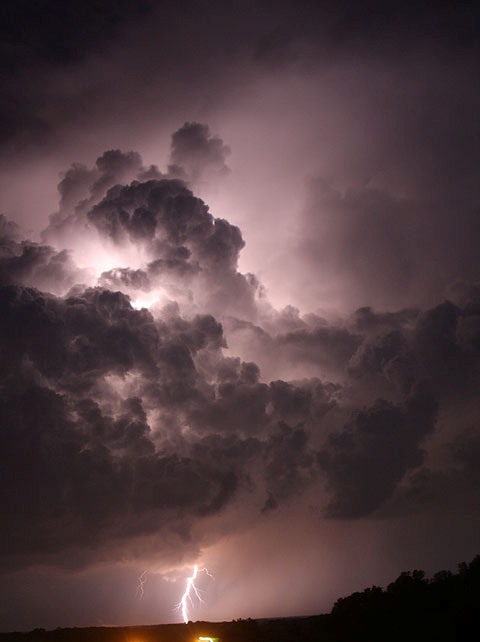
- Do not stand underneath a natural lightning rod such as a tall, isolated tree or a telephone pole.
- Avoid projecting above the surrounding landscape; for example, do not stand on a hilltop.
- In a forest, seek shelter in a low area under a thick growth of small trees. In open areas, go to a low place such as a ravine or valley.
- Get away from open water, tractors and other metal farm equipment, and mall metal vehicles such as motorcycles, bicycles, and golf carts.
- Avoid wire fences, clotheslines, metal pipes and rails; put down golf clubs.
- Finally, if you are caught out in a level field or in the open, away from shelter, and you feel your hair stand on end, lightning may be about to strike you. Drop to your knees and bend forward, putting your hands on your knees. Do not lie flat on the ground.
|
- Drive with lights on low beam. High beams will only be reflected back off the fog and actually impair visibility even more.
- Slow down. . .Slow down. . .Slow down.
- Listen for traffic you cannot see.
- Use wipers and defrosters as necessary for maximum visibility.
- Be patient. Do not pass lines of traffic.
- Do not stop on a freeway or heavily traveled road. If your car stalls or becomes disabled, move away from the vehicle to avoid personal injury.
- Consider postponing your trip until the fog clears. Usually by late morning or during the afternoon, visibilities improve.
|
- Look Before You Lock!
- Slow down. Strenuous activities should be reduced, eliminated, or rescheduled to the coolest time of the day. Individuals at risk should stay in the coolest available place, not necessarily indoors.
- Dress for summer. Lightweight, light colored clothing reflects heat and sunlight, and helps your body maintain normal temperatures.
- Try not to eat as much. Foods that increase metabolic heat production also increase water loss.
- Drink plenty of water or other non-alcoholic fluids. Your body needs water to keep cool. Drink plenty of fluids even if you do not feel thirsty (unless your physician has directed otherwise).
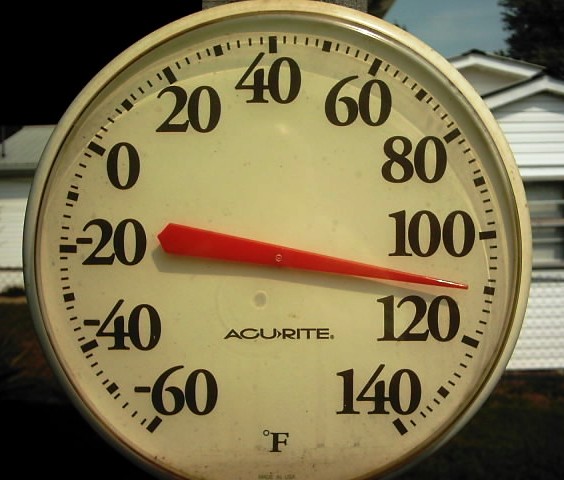
- Do not drink alcoholic beverages. This is the same advice given for extremely cold weather. Alcoholic beverages will constrict the blood vessels, which will prevent adequate blood circulation to remove excess heat.
- Spend more time in air-conditioned places. Air conditioning in homes and other buildings markedly reduces danger from the heat. If you cannot afford an air conditioner, spending some time each day (during hot weather) in an air-conditioned environment affords some protection.
- Do not get too much sun. Sunburn makes the job of heat dissipation that much more difficult.
- Do not leave your children or pets alone inside automobiles during extremely hot days. The temperature inside vehicles can climb rapidly and may exceed 100 degrees.
- Do not take salt tablets unless specified by a physician.
|
| Winter Storm Safety Rules |
|
|
|
|
Keep ahead of winter storms by preparing ahead. . .
- Check battery powered equipment before the storm arrives. A portable radio or television set may be your only contact with the world outside.
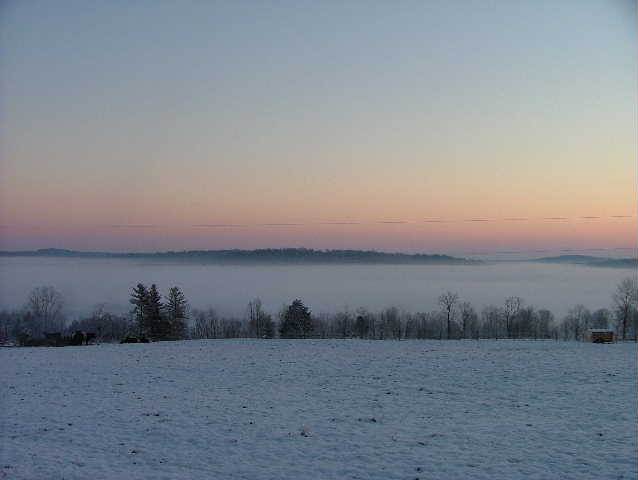
- Check your food stock and extra supplies. Your supply should include food that requires no cooking or refrigeration in case of power failure.
- Stay indoors during storms unless you are in peak physical condition. If you must go out, avoid overexertion.
- Do not kill yourself shoveling snow. It is extremely hard work for anyone in less than prime physical condition, and can bring on a heart attack, a major cause of death during and after winter storms.
|
| Winter Travel Safety Rules |
|
|
|
|
- If the storm exceeds or even tests your limitation, seek available refuge immediately.
- Plan your travel and select primary and alternate routes.
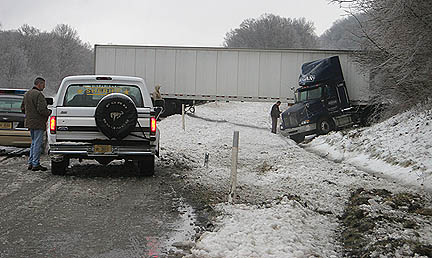
- Check the latest weather information on your radio.
- Try not to travel alone; two or three persons are preferable.
- Always fill your gasoline tank before entering open country, even for a short distance.
- Suggested winter storm car kit includes: blankets or sleeping bags, matches and candles, empty 3-pound coffee can with plastic lid (for melting snow to provide drinking water), facial tissue, paper towels, extra clothing, high calorie, nonperishable food, compass, shovel, sack of sand, flashlight or signal light, windshield scrapper, booster cables, tire chains, tow chains, fire extinguisher, catalytic heater and axe.
|
|